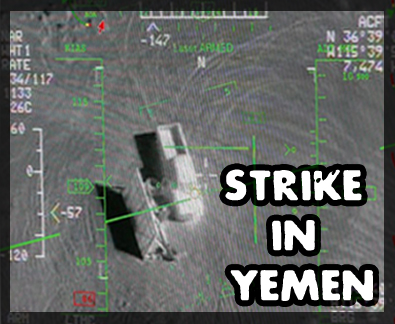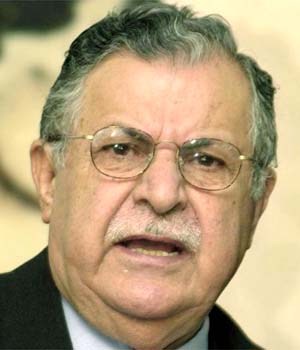The United States does not now have a defense and national security “vision” for the future appropriate to the threats, challenges and opportunities of the 21st century. What we have is a series of sometimes contradictory tactical strategies that are sometimes aimed as much at domestic political constituencies as they at resolving the crises and conflicts we face in the world today.
That is not to say a “security policy vision” would be easy to frame. At the end of WWII the United States adopted a “containment” strategy as much as anything else for dealing with the Soviet Union. But it neither ended threats nor achieved “smooth sailing” and in the years after Vietnam, was transformed into peaceful coexistence and detente which became an umbrella under which the Soviet Union expanded its reach around the globe.
Indeed it did take the US time to firm up our post-WW II policy. We organized the US security apparatus into a capable force and secured the eventual establishment of NATO. And we adopted the Breton Woods economic structures after considerable false starts that would propel us into the next forty years of the most extraordinary economic growth in world history. But all would take time.
And just as we were seeking to establish a means of defending ourselves from the threat of communist aggression, we actually largely disarmed after defeating Japan or Germany. Not only did 20 million soldiers come home, but defense budgets were continually slashed. For example, in 1950, the Truman defense budget of $11 billion was slashed by $4 billion by a Republican controlled Congress. In debates eerily similar to what we are hearing today, it was argued the US should pay attention to the home fires, as America concentrated on going to school, starting families, buying new cars and otherwise living the American dream.
In the White House in early 1950, President Truman learned from the intelligence community that North Korea had neither the intention nor capability to invade the Republic of Korea (ROK), nor were China or the Soviet Union interested in helping with such an attack.
Just the year before the Congress defeated by one vote a $150 million aid bill for the ROK. No assistance would be forthcoming for the next year. In addition, the US Secretary of State announced that the ROK was beyond America’s defense perimeter.
And just days before the invasion, however, the US CIA station chief in China had learned of the North’s intentions but was unable to get the information to the US in time. This was early June 1950.
On June 25, 1950, the communist North with significant help from both the Soviets and the Chinese communists, sent a massive invasion force south, capturing the capital of South Korea. The invasion force swept through Seoul, only 17 miles from the border, and marched south, eventually forcing ROK forces into a shallow perimeter around Pusan on the eastern coast.
That war cost the lives more than 35,000 American soldiers and over 3 million civilian and military deaths among the Korean people. While it saved the now free people of the ROK and prevented the extension of the communist gulag in the north over the entire peninsula, we and our ROK allies had to fight the war initially unprepared and undermanned.
Why should Americans care anymore about Korea?
The highest ranking defector from North Korea told an American military officer at the beginning of the past decade that Kim Jong Il, the tyrant ruling the north, had developed nuclear weapons for the purpose of invading South Korea. The bombs would hold at bay any American defense, keeping hostage American cities with North Korean long range missile.
The North would simply wait until US forces were withdrawn, as is now being proposed by some. Iran, allied with North Korea, is developing longer range and more capable ballistic missiles and remains on the road to develop nuclear weapons.
In this context, most thinking about future US security policy is attempting to justify major cuts in the defense budget without any specific reference to how such proposed levels of spending will bolster American security policy or deal with these looming threats. A war weary country may simply want to come home. For example, the Bowles-Simpson debt commission report advocated a reduction in US military spending of some $1.2 trillion over the next decade. What risks are they prepared to take? We are not told.
Similarly, the Sustainable Defense Task Force, brought together by Congressman Barney Frank, also proposed a decade cut of over $1 trillion in defense spending under a general rubric of the US seeking to stay at home and “not seek fights overseas” or “minding our own business” as some have put it.
They propose what I term the “Sing Kumbaya” security strategy. Apart from serial assertions of how current US force structure is more capable or greater in numbers than current or any foreseen adversaries’, and that subsequent reductions to levels not seen in half a century or more, the task force is largely silent.
Does the US need a vision, especially in the area of nuclear weapons, nuclear deterrence and proliferation policy? Do we have one? And if not, what should it be?
Most administration analysts see US nuclear policy as made of some five elements: (1) arms control with Russia; (2) cleaning up nuclear material under the rubric of he administration’s “Four Year” lock-down; (3) Possible ratification of the CTBT or the Comprehensive Test Ban Treaty; and (4) Deterring or stopping the acquisition of nuclear weapons including a dirty bomb or radiological devices by terrorists intent upon using them against the United States.
Here the story is the good, the bad and the ugly.
Why is this the case?
First, there is too much of America’s nuclear security strategy dominated by existing or potential bi-lateral agreements with Russia;
Second, too much of American strategy depends upon what I call the ricochet strategy, getting country A to do something by getting country B and C to do something first, and they in turn do something but only until the US acts correctly first;
Third, there is a disconnect between trying to stop terrorists stealing or gaining control over nuclear material under the assumption that such groups as Al Qaeda, are total independent actors, un-tethered to any state, what Michael Ledeen calls the “terror masters”;
Fourth, following from this is the lack of coherence across the political spectrum of what exactly is the terrorist threat we face with too much attention to individual lone wolf bad actors influenced by social media or internet “appeals to jihad”;
Fifth, Americans want to “win” when it comes to dealing with our enemies, a kind of “get in and get it done” strategy. Unfortunately, there is little understanding of exactly what are US goals and objectives that we are trying to achieve; and finally,
Sixth, there is little appreciation of the “poisonous coalition” we still face, made up of terror masters states (Iran, Syria and North Korea), their allies, (China, Russia, Venezuela) and their terrorist accomplices (Hamas, Hezbollah, Al Qaeda, Islamic Jihad).
One may ask, what’s wrong negotiating a new arms control agreement with Russia?
However useful the new START treaty may be, it does nothing to curtail the nuclear programs in Iran and North Korea, the two most serious threats we face. And as we reduce our nuclear forces, we may undermine the credibility of that deterrent and push our allies to develop their own independent nuclear forces, thereby undermining non-proliferation. As our numbers come down, the temptation will be to save money by cutting too much and undermining stability in the bargain.
So, too, with the CTBT. For the treaty to go into effect, Iran and North Korea must ratify it. That is not going to happen. The US ratification of the treaty will not change US policy as we have not tested a nuclear device for two decades. So what do we get?
On the other hand, the four year lock down of nuclear material proposed at the Washington summit is a good roadmap for the future. And the country has made real progress in bringing such material either under lock and key or destroyed. Of particular use has been the transformation of Russian nuclear material, “megatons” for use in US electrical utilities as “megawatts.
But, the most serious threat we face is the terror state itself, Iran. There, the development of nuclear weapons will be paralleled with the creation of a terror group such as the IRGC, solely dedicated to detonating such a weapon on American soil.
The mullahs are not going to participate in any lock-down of nuclear martial.
This threat requires an overall strategy of strong sanctions and divestment from any business that does commerce with Iran. We have to build more missile defenses sooner and protect our grid and infrastructure from EMP. We need a continual offensive strategy of taking down the regime in Tehran through offensive cyber. And we need to defend ourselves through a rigorous use of the proliferation security intuitive. And more than ever, we need an energy and oil policy strategy including an open–fuel standard that could potentially drive the price of oil to $30 a barrel. Of equal importance must be a positive policy to help the democratic resistance in Syria and Iran.
Thus central to our nuclear policy objectives should be a widespread and creative policy of ending the regime in Iran, as originally passed by the US Congress in 1998 that does remain the law of the land. And that means not tying such a strategy to whether allies of Iran such as China and Russia, finally deem to give us permission to undertake a needed policy..
According to senior US military leaders, we have forensic evidence the Iranian regime has been arming terrorists in both Afghanistan and Iraq that are attacking and killing American soldiers. We do not need to pass some “international test” to protect American soldiers! .
The Constitution calls upon American elected leaders to “Provide for the Common Defense”. Whether we do so under the rubric of a vision such as President Reagan’s “Peace Through Strength”, may very well determine whether the US maintains the strength that deflects tyrants and protects our homeland. When Reagan explained his vision was “We win, they lose” when it came to the Cold War struggle with the Soviets, most off the Washington press corps had a case of the vapors.
Today, our country’s lack of vision may embolden our enemies and discourage our friends.
Six decades ago, America let down her guard and paid an enormous price in the Korean War. In the decade prior to 9/11, after the end of the Cold War, we underfunded our defense acquisition accounts by fully 40%, assumed it was the end of history and ignored the overseas terror storms that were gathering. Our senior officials said taking down the terror masters “was too hard to do”.
Terrorist Investigations “stopped at the water’s edge”.
Today, even though defense accounts are slated to decline by $800 billion in the decade plus from 2009-2021, further cuts of $1.2 trillion are being recklessly bandied about as if the strength of our defenses has nothing to do with our safety or security. Since 9/11, we have remained safe from a catastrophic terror attack on our soil, even as our resources devoted to defense and homeland protection rose. That is not a coincidence.
Next time, with nuclear dangers rising, can we afford to be wrong?



COMMENTS
Please let us know if you're having issues with commenting.